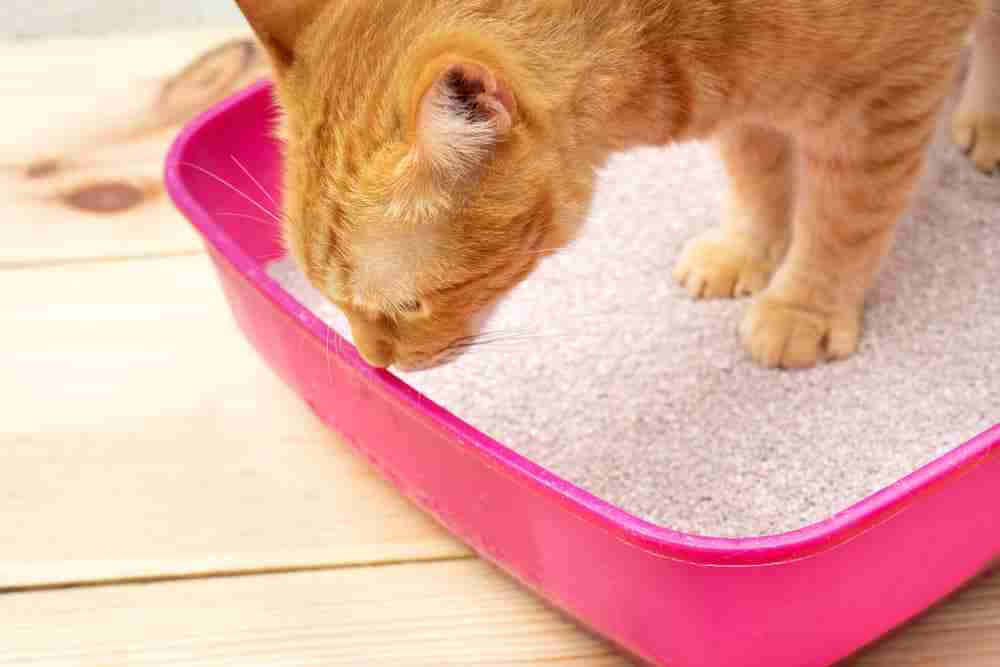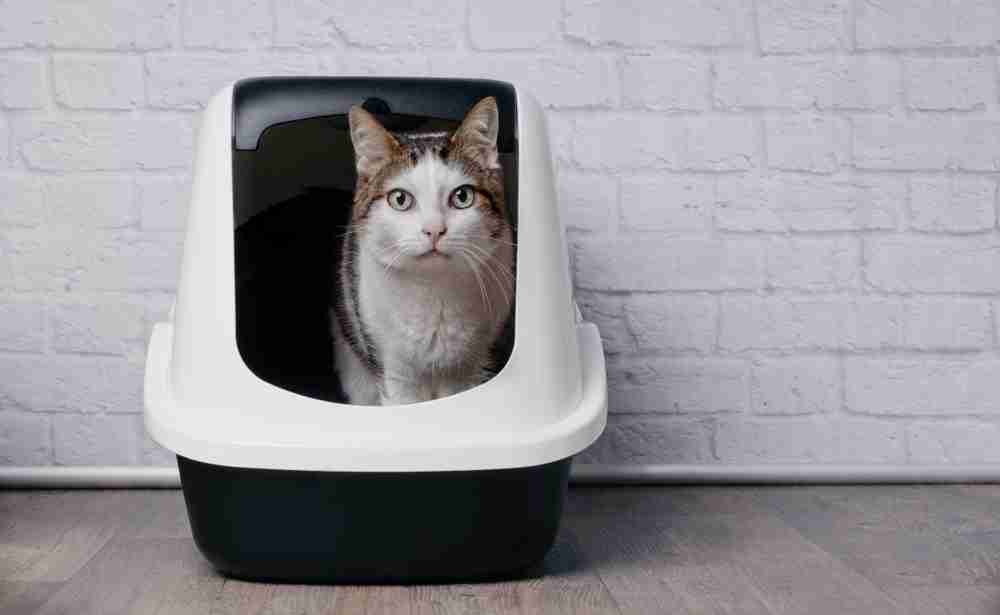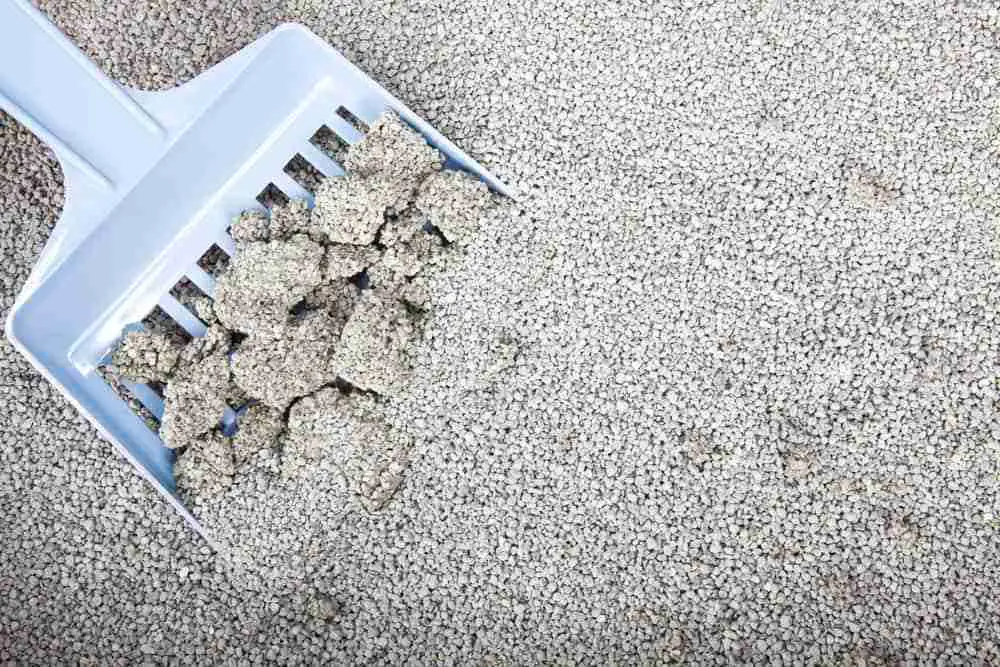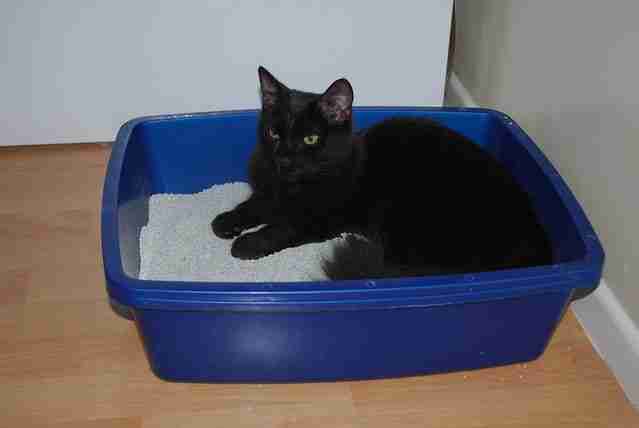If you have never owned a cat before this is an ownership problem you would not even have guessed at in a million years. However, if you do have experience of cat ownership you will undoubtedly have come across this problem – and it is absolutely gross! We are talking about cat litter, specifically, cat litter that has been deposited outside the box after use. Nasty…
Clearly, dirty soiled or even unsoiled litter deposited around the house and not in the tray is just plain gross – who knows what contaminants are getting spread around the place? And worst of all is the random locations that this litter turns up in. On chairs, on bed covers, in random rooms away off the litter tray….
If you have a young child this nasty problem can be disconcerting particularly with kids willing to put all sorts in their mouths. So how to control cat litter tracking? Unfortunately, there is no one dynamite solution but here are a bunch of tips that when used in conjunction, can greatly reduce the problem and keep cat litter from tracking!
Trim Fur
Want to know how to stop cat litter tracking the simple way? Trim fur. Ok, if you have a docile, good-natured cat you might get away with this one. For me, my cat hates having her back feet touched – seems really ticklish, so this is not easy to pull off.
The basic idea is that a good deal of the cat litter tracking issue is caused by nuggets of litter getting caught up in the fur around the feet – specifically, the fur between the pads.
To reduce this effect, trim the fur down so it is level with the pad – don’t shave it off or go crazy with it – just level the fur down to pad level. The trim reduces the amount of fur the litter can get trapped in and the fur is short enough that litter drops off quickly and easily with minor movement – preferably before your cat has exited the litter zone!

Use A Mat
There are some really cool and inventive cat litter tracking solutions on the market these days. Some of the litter mats out there these days that can help make a massive difference in how far litter can escape from the box.
These mats, usually rubber, are placed under your litter box. They are generally quite sizeable so that your cat has to walk across the mat as they exit the box. The mat has a honeycomb style surface that dislodges and captures the litter trapped on your cat’s feet before they walk it all over the house. The mat can be easily emptied back into the box when you remember to get round to it.
As you can imagine there is a whole array of mats in different sizes and colors, some with easy emptying designs and some that have waterproof additions for cats with …well bad aim…Have a look here at some of the best litter tray mats. Many owners report that these mats have made a massive difference to their cat litter tracking problems!
Use A Top Entry Litter Box
How to stop cat litter tracking? Use a top entry box! We are talking about covered litter boxes with an entry hole in the roof of the box for those who aren’t familiar with such things.
The benefit of these boxes is twofold – first, your cat can’t kick litter out of the box when covering their business and secondly the exit from the box is sometimes enough to dislodge litter from the feet.
Often the box will have a roof that is perforated so that when the cat exits the box they sit on the roof of the box and litter can fall back through into the box.
However, these boxes aren’t for everyone. Older cats with joint issues might have problems using such a box as would smaller kittens and young cats. Additionally, some cats might feel a little claustrophobic or prone to ambush and have difficulty getting used to such a box.
Having said that, people report fewer problems with litter tracking when they use a top entry litter box, these boxes are great at just containing the litter issue. If you are interested in this potential solution have a look here at some of the best top entry litter box choices available on the market.

Get A High Sided Litter Pan
A lot of litter that ends up outside the box does so because the cat has kicked the litter out of the box when they are covering business over.
You are not going to be able to stop the cat from covering so the next best thing is to get a litter tray that the cat won’t accidentally kick litter out of when covering. Such a tray would be a high sided tray or alternatively an extra-large litter box.
You can get special high sided trays but beware they are not for every cat – older cats might struggle to get in and out such a tray!
Reduce The Amount Of Litter In The Box
The more litter in the box and the higher the level in relation to the height of the litter box walls, the more is going to find its way onto the floor!
It is kind of human nature to cover the entire base of the litter tray with litter and then to give it the same level across the box – it’s kind of symmetry in motion. But this creates fine conditions for your cat to kick this stuff all over the place.
Try going minimal – reduce the area of the box you cover and go shallow. Your cat will still know what to do – it is just that less liter equals less likelihood of litter getting deposited outside the box.

Place The Litter Box In A Corner
Here is some useless trivia – cats like to cover into the corner. Who would have thought it? Or rather who sat and worked that one out? Maybe I am a bit thick, but I never really noticed…
Anyway, this has been going on to such a degree that some bright spark has developed a corner litter box shaped like a trivial pursuits wedge.
The big idea is that you encourage your cat to follow it’s natural instincts to cover into a corner and thereby reducing the odds of your cat kicking the litter out into the room beyond the box. The end result is less litter tracking or rather litter beyond the box.
Change The Litter Type
Most of my tracking problems seem to be exacerbated when the litter is that small clay clumping cat litter – it seems to be lightweight enough to kick out the box and also small enough to trap in paw fur and between toes when my cat enthusiastically leaves the open-top box.
The answer is to try a different litter – generally, something either heavier that won’t get caught up in fur or is a real effort to displace from the box or something bigger. If you are like me you should probably try pellets – big enough to be hard to track and too big to get caught up in paws!
Of course, there is the slight problem of her royal highness and whether she approves. A lot of cats get confused or just don’t like having their litter changed from one type to another – I assume it is a texture thing.
If you have such a cat you might need to go through the “phase-out process”. Very slyly, you have to introduce the new litter into the litter mix and increase the proportion in the tray as the weeks go by until your frog is sitting in boiling water if you follow my drift…
Train Your Cat To Use The Toilet
For the fixated, determined owner the obvious answer to litter tracking is to do away with litter and train your cat to use a toilet…like a proper person!
I kid you not – your feline friend has been playing dumb! They can be trained to use the toilet and save on litter and all those problems.
You can generally train your average cat to use a normal household toilet in about 30 days – which is often quicker than you can train a human, but I digress.
You can actually get special training kits to help you achieve this goal. They include useful tools that reduce the opening initially until your cat gets the hang of things without falling in and the like.
However, you should think long and hard before you embark on this solution. If your cat is older they might struggle as your cat needs pretty good mobility to carry this out. Additionally, what happens if you are out and they fall in?
Then there are health concerns – we know cats often harbor toxoplasmosis and this can be spread through fecal matter. Most water and sewage companies are not able to remove this stuff from contaminated water meaning your cat, if infected, could end up spreading the problem through the watercourses and damaging the environment via the treated sewage.
Either way, you decide to act you should find that one or a few of these cat litter tracking solutions working in conjunction should help you to greatly reduce your litter tracking problem
